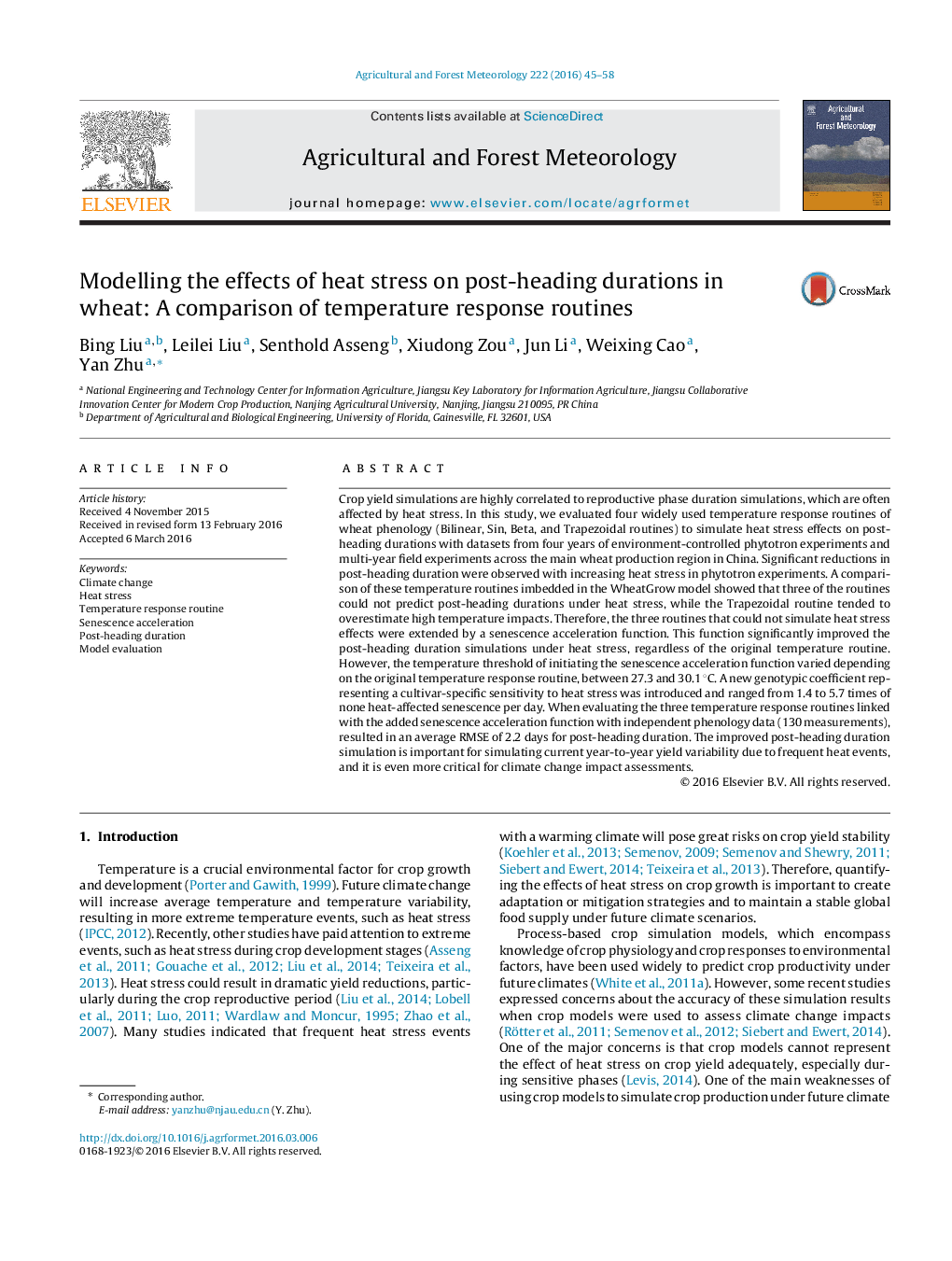| کد مقاله | کد نشریه | سال انتشار | مقاله انگلیسی | نسخه تمام متن |
|---|---|---|---|---|
| 6536957 | 158309 | 2016 | 14 صفحه PDF | دانلود رایگان |
عنوان انگلیسی مقاله ISI
Modelling the effects of heat stress on post-heading durations in wheat: A comparison of temperature response routines
ترجمه فارسی عنوان
مدل سازی اثرات تنش گرمائی بر دوره های پس از سرخوردگی در گندم: مقایسه رفتارهای پاسخ دما
دانلود مقاله + سفارش ترجمه
دانلود مقاله ISI انگلیسی
رایگان برای ایرانیان
کلمات کلیدی
تغییر آب و هوا، استرس گرما، رطوبت معمولی، شتاب زایمان، طول مدت پست ارزیابی مدل،
موضوعات مرتبط
مهندسی و علوم پایه
علوم زمین و سیارات
علم هواشناسی
چکیده انگلیسی
Crop yield simulations are highly correlated to reproductive phase duration simulations, which are often affected by heat stress. In this study, we evaluated four widely used temperature response routines of wheat phenology (Bilinear, Sin, Beta, and Trapezoidal routines) to simulate heat stress effects on post-heading durations with datasets from four years of environment-controlled phytotron experiments and multi-year field experiments across the main wheat production region in China. Significant reductions in post-heading duration were observed with increasing heat stress in phytotron experiments. A comparison of these temperature routines imbedded in the WheatGrow model showed that three of the routines could not predict post-heading durations under heat stress, while the Trapezoidal routine tended to overestimate high temperature impacts. Therefore, the three routines that could not simulate heat stress effects were extended by a senescence acceleration function. This function significantly improved the post-heading duration simulations under heat stress, regardless of the original temperature routine. However, the temperature threshold of initiating the senescence acceleration function varied depending on the original temperature response routine, between 27.3 and 30.1 °C. A new genotypic coefficient representing a cultivar-specific sensitivity to heat stress was introduced and ranged from 1.4 to 5.7 times of none heat-affected senescence per day. When evaluating the three temperature response routines linked with the added senescence acceleration function with independent phenology data (130 measurements), resulted in an average RMSE of 2.2 days for post-heading duration. The improved post-heading duration simulation is important for simulating current year-to-year yield variability due to frequent heat events, and it is even more critical for climate change impact assessments.
ناشر
Database: Elsevier - ScienceDirect (ساینس دایرکت)
Journal: Agricultural and Forest Meteorology - Volume 222, 28 May 2016, Pages 45-58
Journal: Agricultural and Forest Meteorology - Volume 222, 28 May 2016, Pages 45-58
نویسندگان
Bing Liu, Leilei Liu, Senthold Asseng, Xiudong Zou, Jun Li, Weixing Cao, Yan Zhu,
